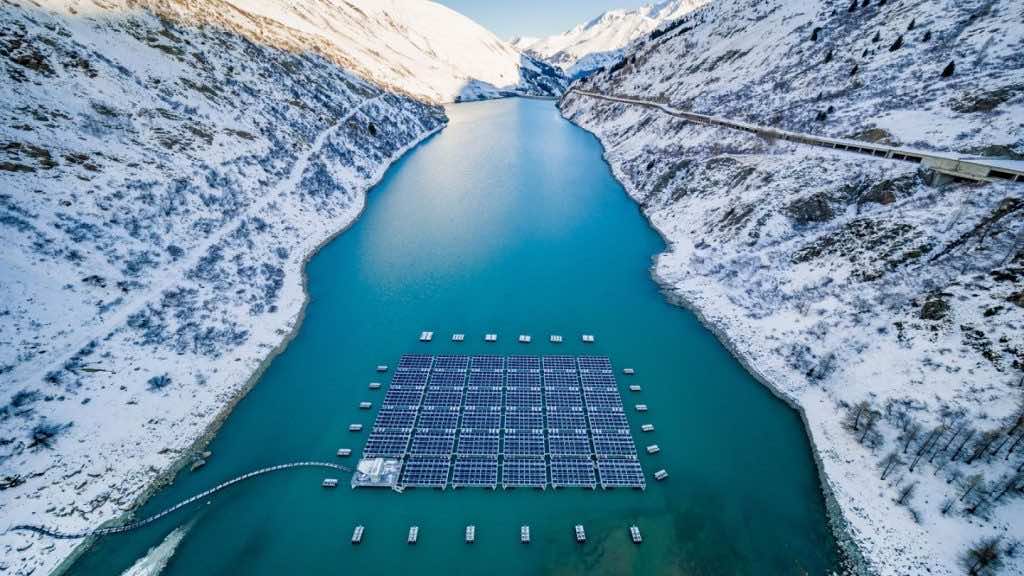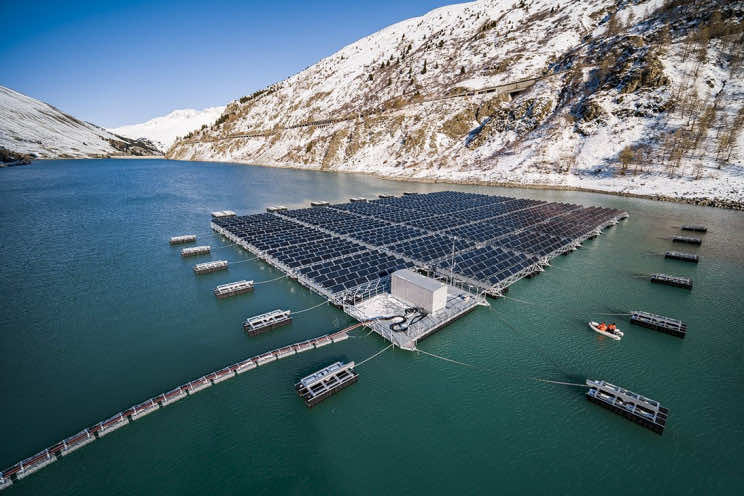Solar panels work better at higher altitudes, and that has been demonstrated again after the world’s first mountain solar farm proves to be 50 percent more efficient.
Bill Gates is to sign a partnership with Europe for building clean technologies, and the rest of the world seems to be in the race as well. Innovative new ideas are surfacing with the progression in technologies and with the world now focused on increasing the utility of renewable energy sources, it is obvious that ideas are working towards meeting the rising demands.
Recently we saw solar panels project over the canals of California, that would not only provide a renewable energy source but would also play its part in saving tons of water per annum. The ideas with dual utilities naturally pack more benefits as they save space, resources, and cost. The world is in dire need of such ideas as this new one that saves acres of land with more energy produced from solar panels installed at higher altitudes at the Lac des Toules reservoir in Valais in the Swiss Alps.

The floating Solar Farm project by Romande Energie won the 2020 Swiss Watt d’Or prize for innovations in renewable energy. It is located at an altitude of 1,800 meters above sea level at a reservoir that already serves as a hydropower station. It serves as an innovative idea saving ample land and making the most of the already built infrastructure. The solar farm consists of 36 floating barges, and around 2,000 square meters of solar panels, its installation at a higher altitude impacts 50 percent more outcome because of the stronger solar radiations.

Guillaume Fuchs, the project’s leader, told Euronews, “the pilot project produces approximately 800-megawatt hour production per year — roughly the need of 225 households.”
After assessing the viability of the project for two years, researchers will find out the answers if it would prove fruitful in achieving clean environment goals, and if it is worth enough to be duplicated on other reservoirs situated at higher altitudes. The Floating Solar Farm was built after six years of untiring efforts that included extensive research and development and at a cost of spending of €2.2 million.


